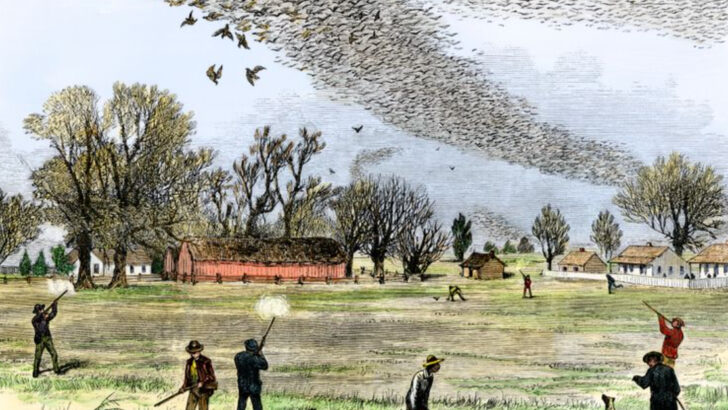Your backyard was once a hunting ground.
Before fences, freeways, and lawnmowers, wild predators roamed freely where porch swings now sway and grills fire up on weekends.
Wolves howled from nearby woods.
Bears lumbered through open meadows.
Even mountain lions crept silently through what’s now a sleepy suburb.
It wasn’t ancient history—it was just two centuries ago.
These predators shaped the land long before we did.
They were bold, wild, and sometimes terrifying.
But they were also part of a delicate, untamed balance.
Ready to meet the former rulers of your neighborhood?
Let’s rewind time and track the beasts that once called your zip code home.
Eastern Cougar
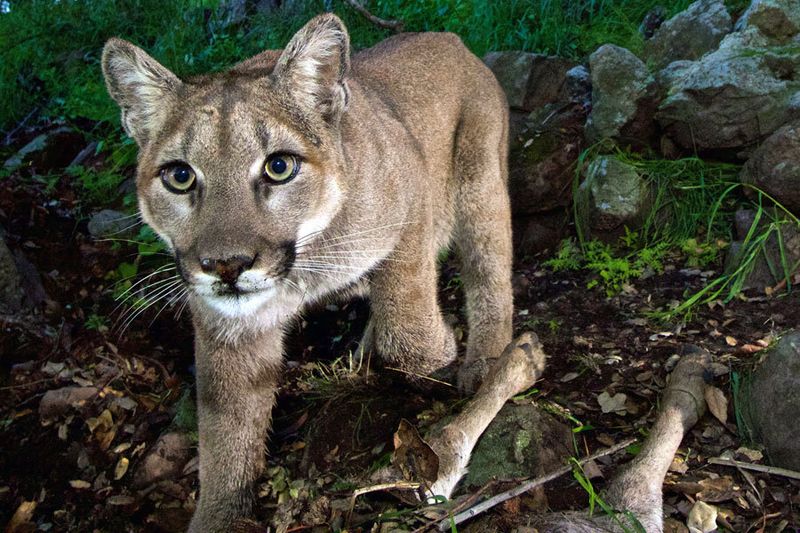
The Eastern Cougar, also known as the ghost cat, silently prowled the dense forests of the eastern United States. With its powerful build and keen hunting skills, it was a fearsome predator of deer and smaller mammals. This elusive feline, with a coat of tawny hues, blended perfectly with the autumn leaves. The whisper of its movement through the undergrowth was the only sign of its presence. Sadly, by the early 20th century, these magnificent creatures vanished from their natural habitats due to hunting and habitat destruction. Their legacy lives on, echoing through the wilderness they once dominated.
Red Wolf
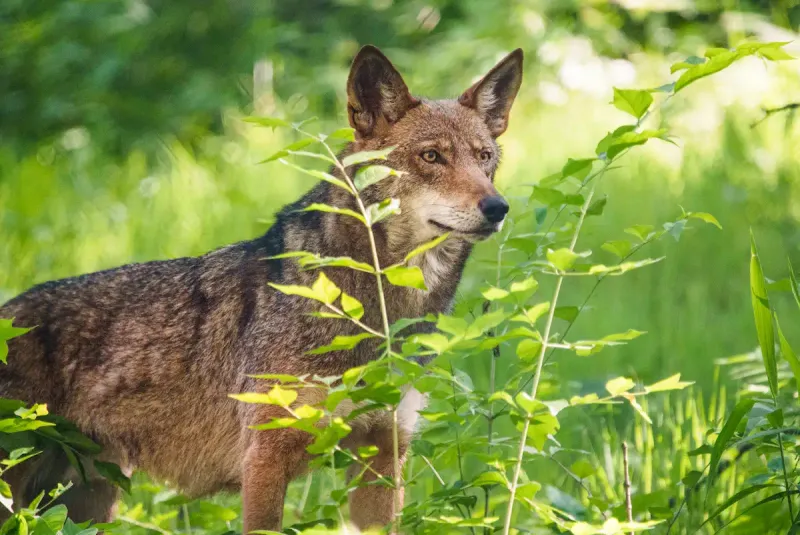
Red Wolves, with their striking reddish coats, were once found roaming across the southeastern United States. These intelligent canines hunted in packs, preying on deer, rodents, and rabbits. Their howls echoed through the night, a haunting melody that spoke of their pack’s unity. In the early 1900s, habitat loss and hybridization with coyotes led to their near extinction. Conservation efforts have since been initiated to bring this enigmatic species back from the brink. Today, a small population survives, reminding us of the resilient spirit of these social and adaptable hunters.
Great Plains Wolf
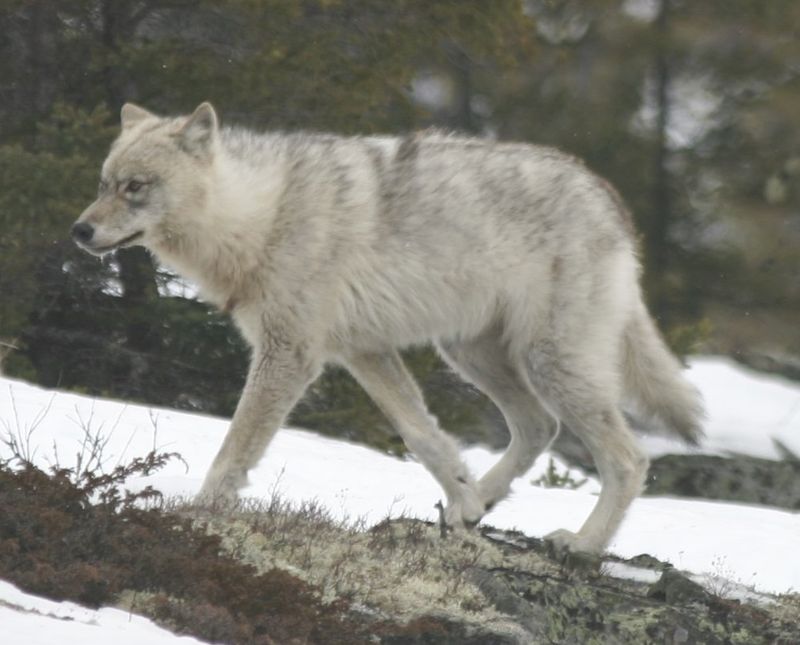
The Great Plains Wolf, a symbol of the expansive American Midwest, thrived in vast prairies and open fields. Known for their endurance and teamwork, these wolves hunted bison and elk, navigating the grasslands with grace and agility. Their presence kept prey populations in check, ensuring a balanced ecosystem. Unfortunately, human expansion and hunting decimated their numbers, leading to their decline. Efforts to reintroduce them have faced challenges, yet their spirit lives on, a testament to the wild heart of the American plains.
Carolina Parakeet
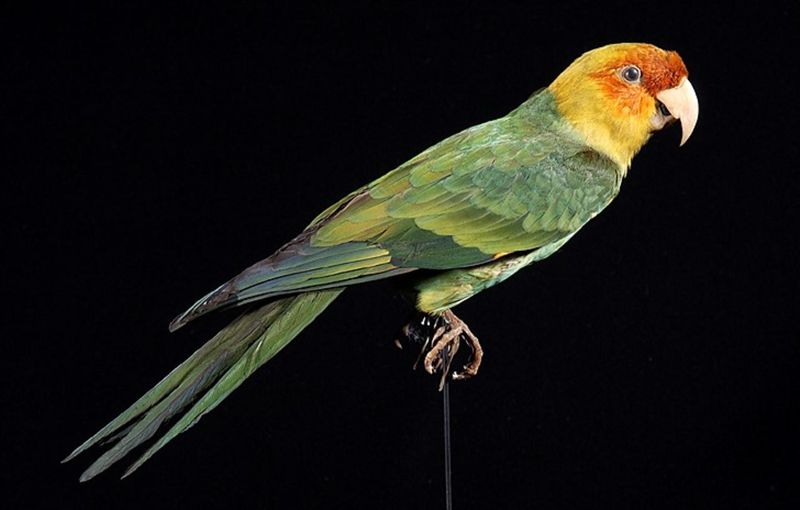
Though not a predator in the traditional sense, the Carolina Parakeet’s influence on its environment was undeniable. These vibrant birds, with their kaleidoscope of colors, were experts at foraging fruits and seeds, thus playing a crucial role in seed dispersal. Their flocks filled the skies with chatter, a vibrant chorus of life. Sadly, the rise of agriculture and habitat destruction led to their extinction by the early 20th century. They remind us of a time when colorful flocks painted the skies, a living canvas of nature’s brilliance.
Passenger Pigeon
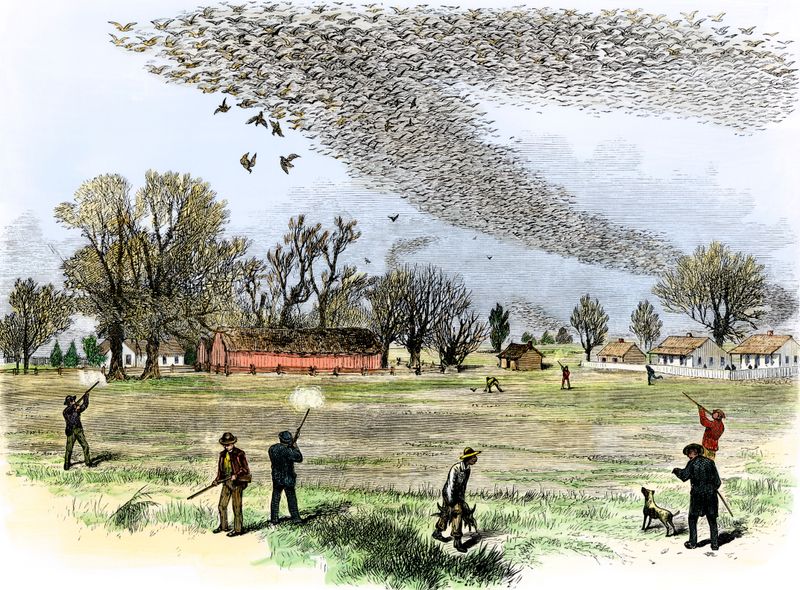
Passenger Pigeons once dominated the North American skies in flocks so large they could block out the sun. These birds, with their streamlined bodies, were adept at swooping down to feed on acorns and grains. Their synchronized flight was a spectacle of natural choreography, mesmerizing to behold. Hunting on such a massive scale depleted their numbers drastically, leading to their extinction by the early 20th century. Their absence is a poignant reminder of the delicate balance between nature and human impact.
Timber Rattlesnake
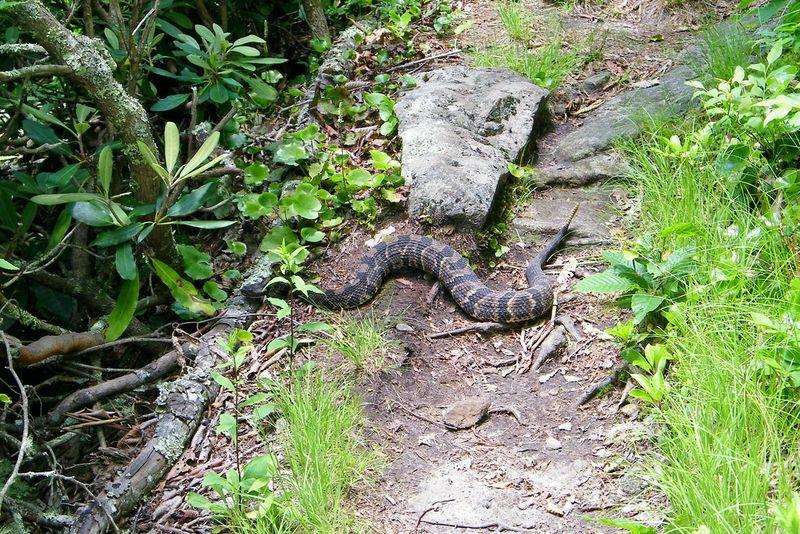
Timber Rattlesnakes, masters of camouflage, once slithered through the deciduous forests of the eastern United States. With their cryptic patterns, they lay in wait for unsuspecting prey, such as rodents and birds. Their rattles, a warning signal, echoed through the underbrush, a sound both feared and respected. Human encroachment and persecution have reduced their numbers, yet they continue to play a vital role in controlling pest populations. These serpents, with their mesmerizing patterns, are a testament to nature’s artistry and balance.
Eastern Indigo Snake
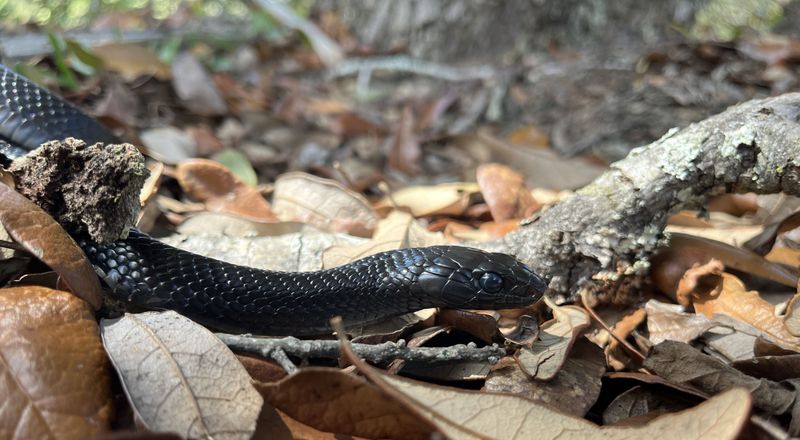
The Eastern Indigo Snake, with its lustrous, dark blue-black scales, was once a common sight in the southeastern United States. This non-venomous snake, with its gentle disposition, played a vital role in regulating populations of small mammals and other reptiles. Its presence indicated a healthy ecosystem. However, habitat destruction and illegal pet trade have significantly impacted its numbers. Conservation efforts aim to restore their habitats and populations, highlighting the importance of preserving these silent guardians of the wild.
American Black Bear
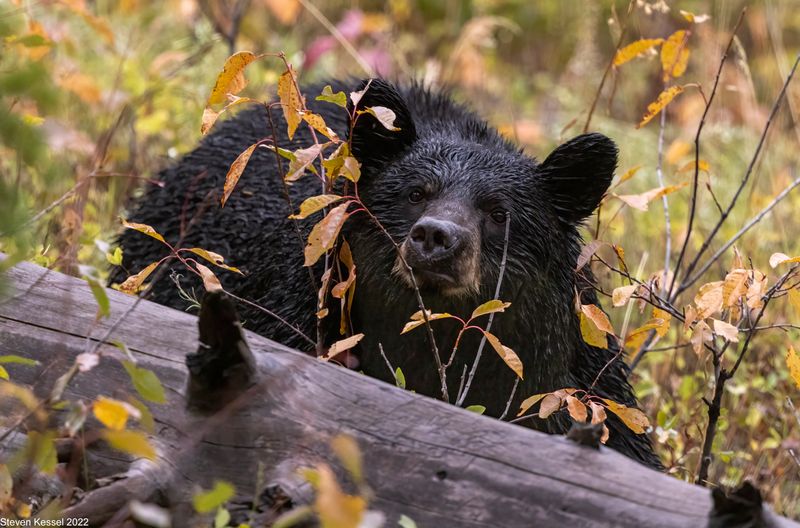
American Black Bears, with their robust figures and inquisitive nature, once roamed freely across North America. These omnivores, skilled in foraging, consumed a diet of berries, insects, and small mammals. Their strength and adaptability allowed them to thrive in diverse habitats. However, hunting and habitat encroachment have limited their range. Despite challenges, these formidable creatures continue to symbolize wilderness and resilience, reminding us of the wild lands they once called home.
Wolverine
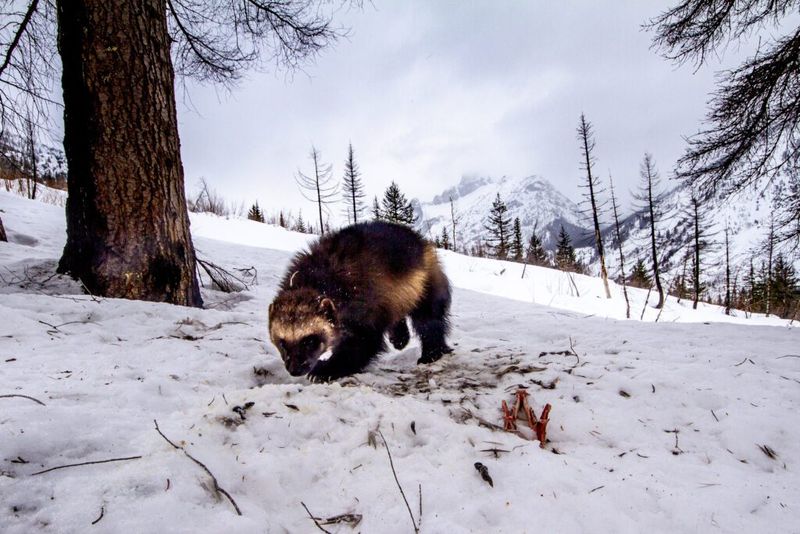
The Wolverine, a creature of legends, is known for its ferocity and strength. With sharp claws and a muscular build, it navigated harsh terrains, preying on rodents and even carrion. This solitary creature was an enigma, its presence often felt but rarely seen. Trapping and habitat fragmentation have threatened its existence, yet its tenacity and resilience remain unmatched. The Wolverine stands as a symbol of the untamed wilderness, a reminder of nature’s raw power and beauty.
Gray Fox
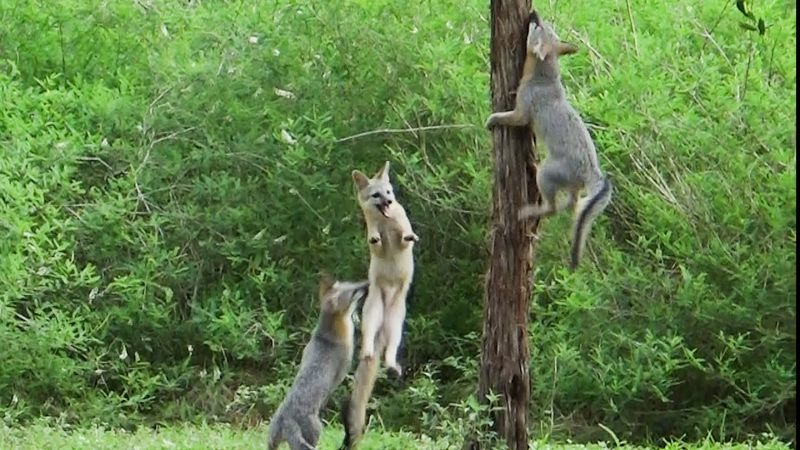
Gray Foxes, with their distinctive grizzled fur and bushy tails, are unique for their ability to climb trees. These agile creatures hunted rodents and insects, playing a vital role in controlling pest populations. Their adaptability allowed them to thrive in diverse habitats, from forests to urban areas. Despite facing threats from habitat destruction and competition with Red Foxes, Gray Foxes continue to charm us with their cleverness and survival instincts. Their presence is a reminder of the wild’s adaptability and charm.
Ocelot
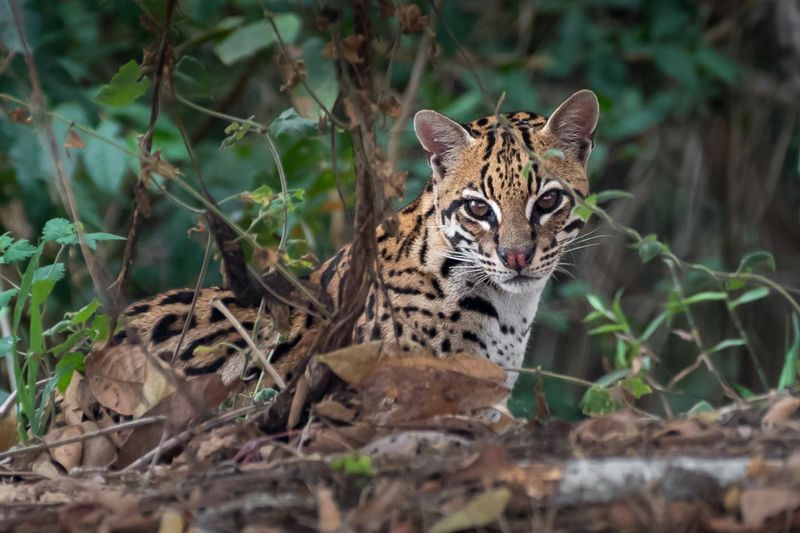
The Ocelot, with its exquisitely patterned coat, prowled the southern parts of the United States. These nocturnal hunters, with their keen senses, preyed on small mammals and birds. Their stealthy movements through dense foliage made them elusive to human eyes. Habitat destruction and poaching for their fur have endangered these beautiful cats. Conservation efforts strive to protect their remaining habitats, ensuring that their captivating presence continues to grace the wild. The Ocelot’s beauty is a poignant reminder of nature’s intricate artistry.
Peregrine Falcon
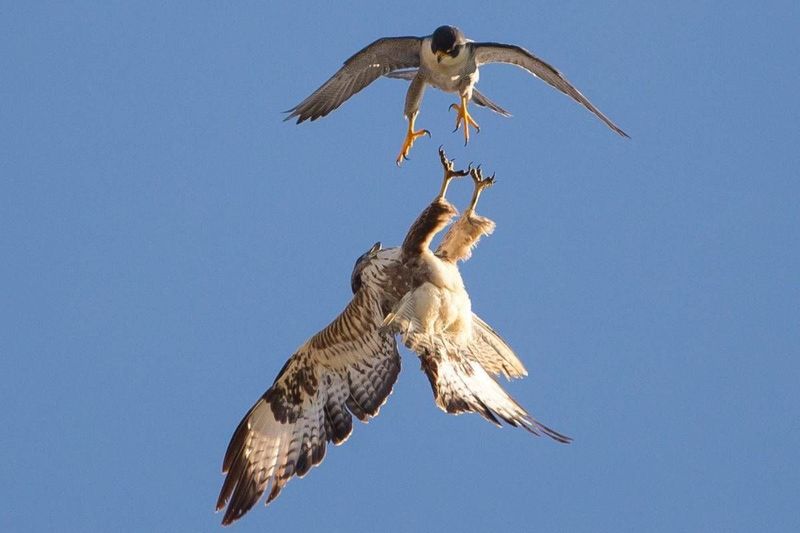
Renowned for their speed, Peregrine Falcons once swept through the skies, preying on birds in mid-air with astonishing agility. Their sharp talons and keen eyesight made them formidable hunters. These falcons were a common sight over cliffs and urban skyscrapers alike. Pesticides like DDT severely impacted their populations, leading to conservation efforts that have since seen a resurgence in their numbers. The Peregrine Falcon remains a symbol of nature’s resilience and the heights of avian prowess.
Northern Bobwhite Quail
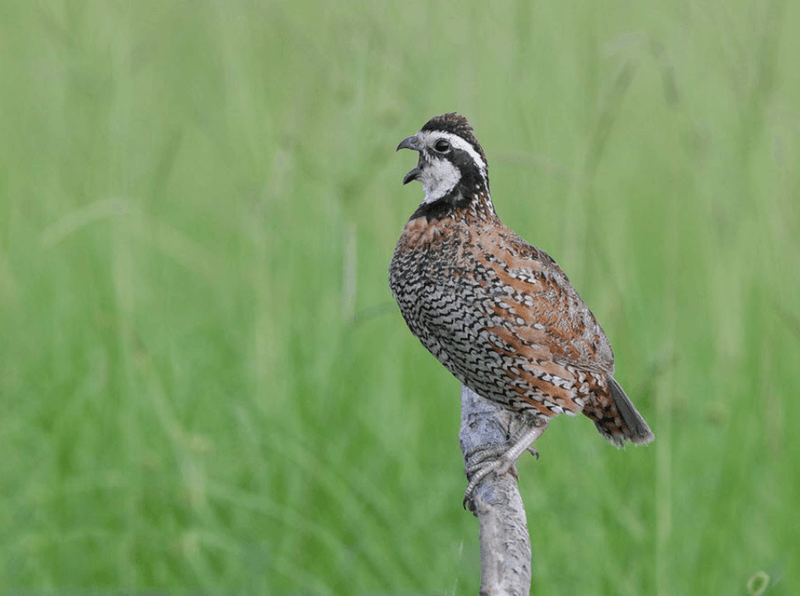
The Northern Bobwhite Quail, with its distinctive call, was once a familiar sound across the rural landscapes of the United States. These small, plump birds were adept at foraging seeds and insects, contributing to the ecological balance. Their camouflage plumage provided protection from predators. However, changes in land use and agriculture practices have led to a decline in their populations. Conservation initiatives aim to restore their habitats, ensuring the continuation of their melodic presence in our natural soundscapes.
American Marten
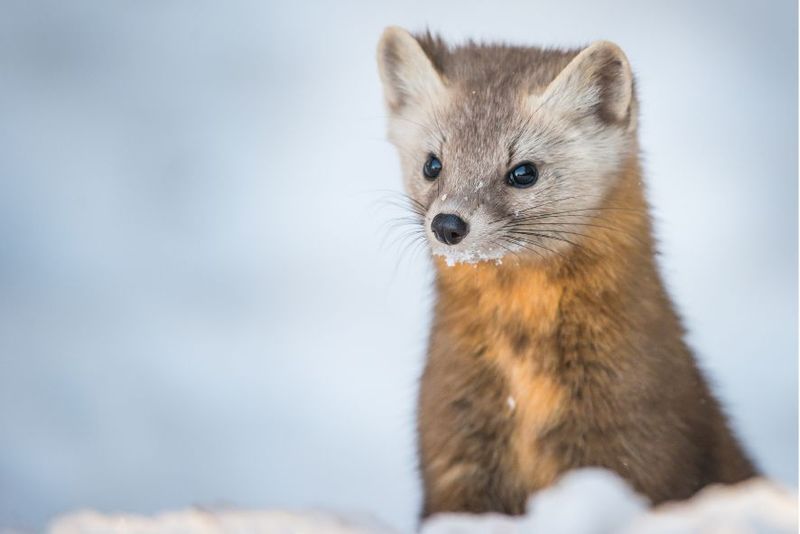
American Martens, with their slender bodies and bushy tails, maneuvered through forest canopies with ease. These agile hunters preyed on small mammals and birds, contributing to the complex web of life within their ecosystems. Their glossy fur was highly valued, leading to extensive trapping in the past. Today, conservation programs work to protect their habitats and populations, recognizing their role in maintaining forest health. The American Marten’s playful agility remains a captivating testament to nature’s adaptability.
Mountain Lion
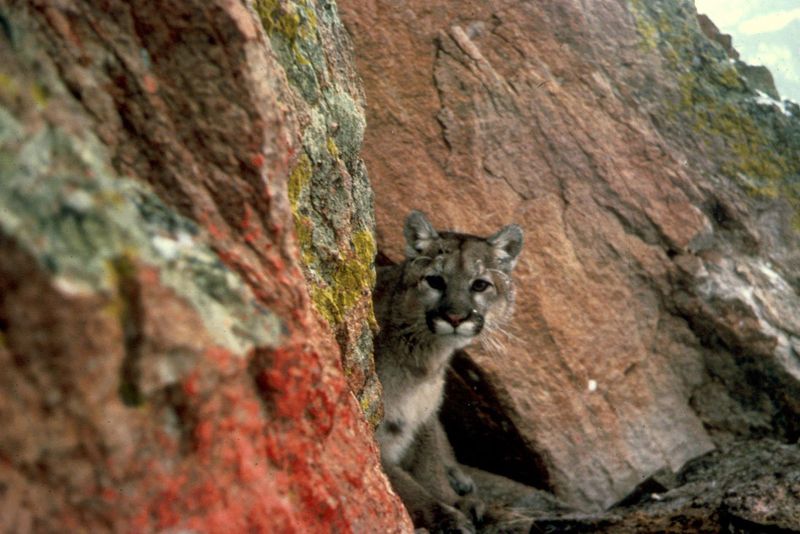
Mountain Lions, also known as cougars or pumas, are apex predators known for their strength and stealth. These solitary hunters traversed vast territories, preying on deer and other mammals. Their keen eyesight and muscular builds enabled them to stalk prey silently. Human encroachment and hunting have threatened their habitats, yet they persist in pockets of wilderness. The Mountain Lion symbolizes untamed majesty and the delicate balance of predator-prey dynamics in nature.
Sea Otter
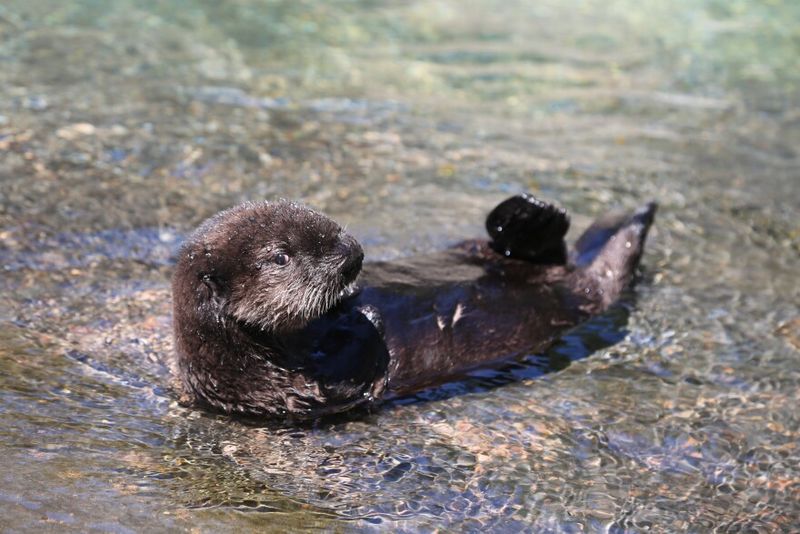
Sea Otters, with their playful antics, are skilled predators in marine environments. Their use of tools, like rocks to crack open shells, showcases remarkable intelligence. Feeding on sea urchins and mollusks, they play a crucial role in maintaining kelp forest ecosystems. Hunting for their luxurious fur decimated populations, but conservation efforts have helped them rebound. Observing a Sea Otter’s playful nature is a delightful reminder of the ocean’s vibrant life and the interconnectedness of marine habitats.
Eastern Spotted Skunk
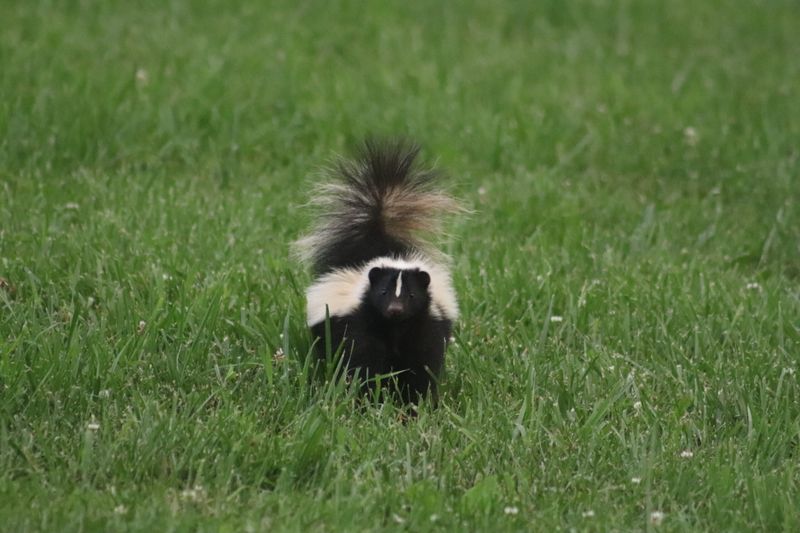
Slinking through the early morning mist, the Eastern Spotted Skunk was a common sight in North America’s woodlands. Known for its intricate black and white patterns, this small but feisty predator was adept at navigating the underbrush. A master of surprise, it often preyed on insects and small mammals with a swift pounce. Its nocturnal nature made it a mysterious figure, rarely seen in daylight yet always present in the ecosystem’s shadows. Despite its small stature, it played a crucial role in controlling pest populations, making it an unsung hero of the natural world. Today, the Eastern Spotted Skunk’s charm still captivates those lucky enough to spot one, a living relic of a time when wild spirits roamed free.

